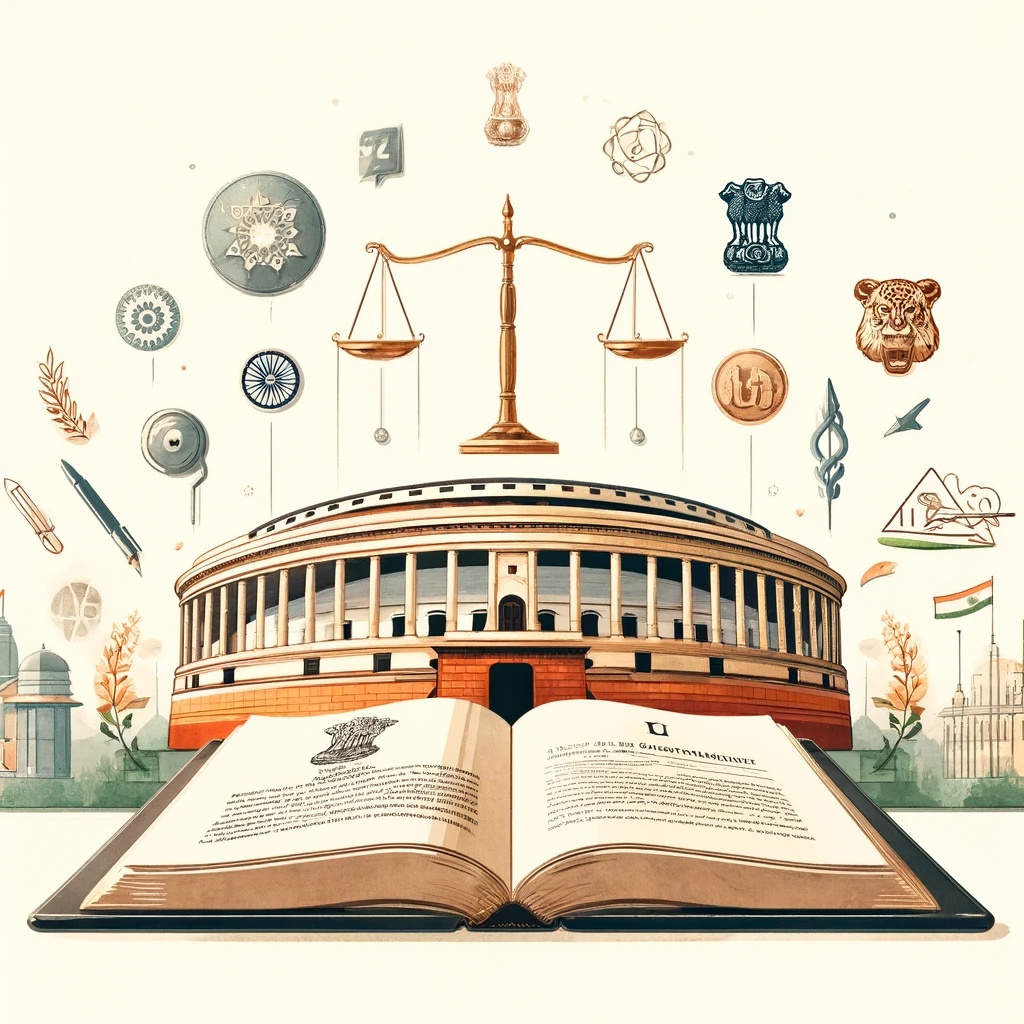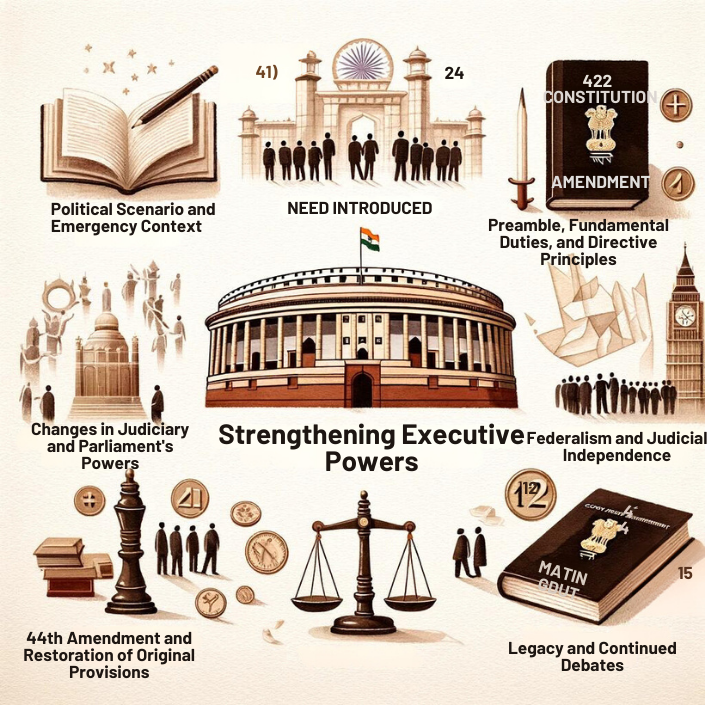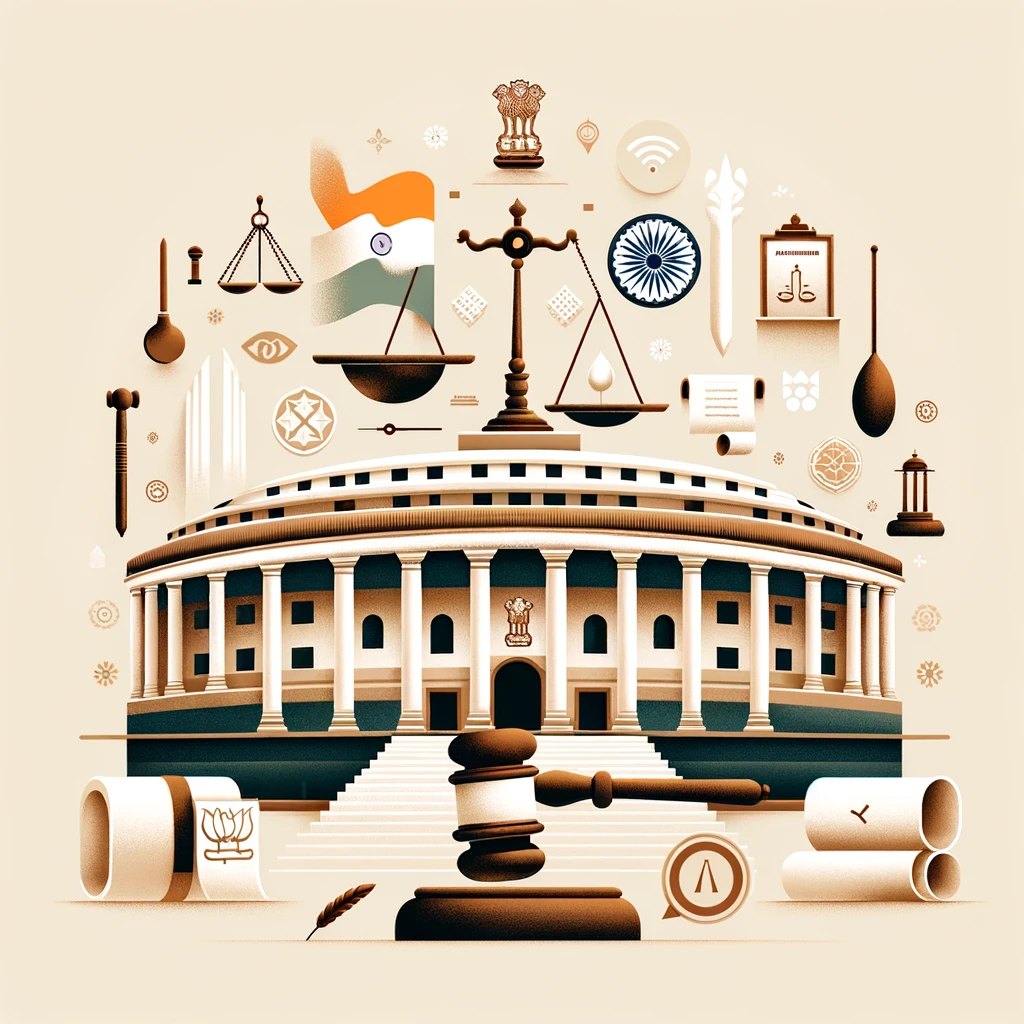The 42nd Constitutional Amendment, often referred to as the “Mini-Constitution,” is one of the most comprehensive and controversial amendments in the history of the Indian Constitution. Enacted during the Emergency period of 1975-1977, it brought significant changes to the Constitution’s structure and functioning. This article explores the context, changes, criticisms, subsequent reversals, and long-term impact of this landmark amendment.

1. Context and Need for the Amendment: Political Scenario and Emergency Context
The 42nd Amendment was introduced in a highly charged political environment marked by the Emergency declared by Prime Minister Indira Gandhi in 1975.
- Political Scenario: The Emergency period (1975-1977) saw the suspension of civil liberties, press censorship, and the arrest of opposition leaders. The government sought to consolidate its power and prevent judicial intervention in its decisions.
- Need for the Amendment: The ruling government argued that the amendment was necessary to streamline the administration, strengthen the executive, and implement socio-economic reforms without judicial hindrance.
The context of the Emergency provided the backdrop for this sweeping constitutional change, aiming to fortify the executive’s control over the state apparatus.

2. Major Changes Introduced: Preamble, Fundamental Duties, and Directive Principles
The 42nd Amendment introduced several significant changes to the Constitution, including alterations to the Preamble, introduction of Fundamental Duties, and strengthening of Directive Principles.
- Preamble: The words “Socialist” and “Secular” were added to the Preamble, and the phrase “unity of the nation” was changed to “unity and integrity of the nation,” reflecting the ideological shift towards a more state-controlled economic model and a unified national identity.
- Fundamental Duties: Part IVA was added, listing ten Fundamental Duties for Indian citizens, emphasizing the responsibilities towards the nation and promoting a spirit of patriotism.
- Directive Principles: The amendment gave precedence to Directive Principles over Fundamental Rights, asserting that the state’s policies aimed at social and economic welfare could not be challenged on the grounds of violating Fundamental Rights.
These changes aimed at reinforcing the state’s authority and emphasizing the citizens’ duties alongside their rights.
3. Strengthening Executive Powers: Changes in Judiciary and Parliament’s Powers
The 42nd Amendment significantly enhanced the powers of the executive and curtailed the independence of the judiciary and the Parliament’s functioning.
- Judiciary: The amendment placed restrictions on judicial review by limiting the power of courts to review the constitutionality of laws. It also transferred several subjects from the state list to the concurrent list, increasing the central government’s legislative authority.
- Parliament’s Powers: It curtailed the powers of the Parliament by imposing restrictions on the legislative process. It made it mandatory for the President to act on the advice of the Council of Ministers, thereby reducing the autonomy of the President.
These changes aimed at centralizing power and reducing the checks and balances that could hinder executive actions.
4. Criticism and Opposition: Impact on Federalism and Judicial Independence
The 42nd Amendment faced significant criticism and opposition from various quarters for its impact on federalism and judicial independence.
- Impact on Federalism: By transferring subjects from the state list to the concurrent list and increasing central control, the amendment was seen as an assault on the federal structure of India, undermining the autonomy of state governments.
- Judicial Independence: The restrictions on judicial review and the enhancement of executive powers were viewed as direct attacks on the independence of the judiciary, undermining its role as a check on the executive and legislative branches.
Critics argued that the amendment was an attempt to entrench authoritarian rule and dismantle the democratic safeguards of the Constitution.
5. Subsequent Reversal: 44th Amendment and Restoration of Original Provisions
In response to widespread opposition and the eventual end of the Emergency, the succeeding government introduced the 44th Amendment in 1978 to undo many provisions of the 42nd Amendment.
- Restoration of Judicial Review: The 44th Amendment restored the power of judicial review to the Supreme Court and High Courts, re-establishing their authority to review and strike down unconstitutional laws.
- Revocation of Executive Powers: It reversed several changes that had enhanced executive powers, including the mandatory requirement for the President to act on the advice of the Council of Ministers.
- Reaffirmation of Federalism: The amendment restored the balance of power between the central and state governments, reaffirming the federal structure of the Constitution.
The 44th Amendment was a crucial step in restoring democratic norms and constitutional integrity post-Emergency.
6. Long-term Impact: Legacy and Continued Debates
The 42nd Amendment, despite its controversial nature, left a lasting legacy on the Indian constitutional landscape and continues to be a subject of debate.
- Legacy: The amendment’s introduction of Fundamental Duties remains a significant addition, underscoring the responsibilities of citizens. The changes to the Preamble have also persisted, reflecting India’s ideological framework.
- Continued Debates: The amendment’s legacy is debated in terms of its impact on democracy, federalism, and judicial independence. It serves as a reminder of the potential for constitutional misuse and the importance of safeguarding democratic institutions.
The 42nd Amendment’s impact highlights the dynamic nature of the Constitution and the need for vigilance in protecting democratic principles.
Conclusion
The 42nd Constitutional Amendment, enacted during a turbulent period in Indian history, brought significant and controversial changes to the Constitution. Its sweeping reforms aimed at centralizing power and limiting judicial independence faced substantial opposition, leading to their partial reversal by the 44th Amendment. The long-term impact of the 42nd Amendment underscores the importance of constitutional safeguards and the ongoing need to balance state authority with individual freedoms and democratic principles. For UPSC aspirants, understanding this amendment is crucial for comprehending the interplay between political power and constitutional integrity in India’s democratic framework.


